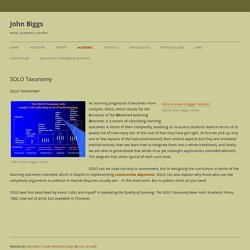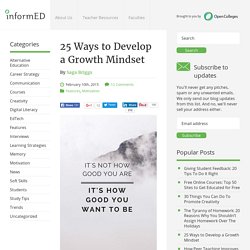

How-To-Give-Feedback-To-Students-The-Advanced-Guide-Final1. SOLO Hexagon Generator. This HookED app populates a SOLO Hexagon Template.

Brainstorm content ideas and enter them in the fields below. Click “Generate Document” to populate the template. Print the template and cut out the hexagons. Ask students to arrange the hexagons in sequences and clusters, justifying and annotating any connections made. Untitled. An Exciting Way to Learn Geography & More. Habits of Mind. Habits of Mind. User Registration - Challenging Learning. Australian Professional Standards for Teachers. School Excellence Framework. Quality Teaching Framework. Quality Teaching Rounds - Change Your School. Thanks again for enabling Debbie & I to access the training via the VC, it has really inspired us to get the rounds going in our school now.

Testimonial from Regional participants joining QT Rounds training via Adobe Connect. Quality Teaching (QT) Rounds – A Process for Sustainable Collaborative Professional Learning What are QT Rounds? Based on the work and research of educators at the University of Newcastle’s School of Education, Quality Teaching Rounds (Bowe & Gore, 2011) is based on objective observations of school and classroom practice by a Professional Learning Community (PLC) which is comprised of four or more teaching staff, utilising the Quality Teaching model, to inform and improve decision-making about student learning.
Key to this is the use of the Quality Teaching model to facilitate a common understanding and a common language of productive teaching and learning practices used across all our school contexts. How can I learn more and when can I start? Reference List. What works best. Inquiry-Based Learning: From Teacher-Guided to Student-Driven. Inquiry-Based Learning. Guided inquiry model. Guidedenquiry. SOLO Taxonomy. Click to view a bigger version As learning progresses it becomes more complex.

SOLO, which stands for the Structure of the Observed Learning Outcome, is a means of classifying learning outcomes in terms of their complexity, enabling us to assess students’ work in terms of its quality not of how many bits of this and of that they have got right. At first we pick up only one or few aspects of the task (unistructural), then several aspects but they are unrelated (multistructural), then we learn how to integrate them into a whole (relational), and finally, we are able to generalised that whole to as yet untaught applications (extended abstract). The diagram lists verbs typical of each such level. SOLO can be used not only in assessment, but in designing the curriculum in terms of the learning outcomes intended, which is helpful in implementing constructive alignment.
The SOLE Model & Toolkit – Student-Owned Learning-Engagement. 6 Ways to Set Up a Self Organized Learning Environment (SOLE) at School. As a teacher, you'll already be fully aware of the importance of your role as an educator and as a person who inspires a love of learning.

Your enthusiasm for learning will already be setting a positive tone within the classroom. From here, there are some other ways to help the class participants enjoy the SOLE activities even more. <img alt="Image titled Set Up a Self Organized Learning Environment (SOLE) at School Step 1" src=" width="728" height="546" class="whcdn" onload="WH.performance.clearMarks('image1_rendered'); WH.performance.mark('image1_rendered');">1Be openly curious along with the students.
In class, students can sometimes be worried that they might ask a "stupid question". This can stifle learning if children are worried that their peers and teacher are judging them unfairly for a dumb question. SOLE Toolkit Web 2.6. 25 Ways to Develop a Growth Mindset - InformED. “In one world, effort is a bad thing.

It, like failure, means you’re not smart or talented. If you were, you wouldn’t need effort. In the other world, effort is what makes you smart or talented.” –Carol Dweck What if your true learning potential was unknown, even unknowable, at best? A “growth mindset,” as Dweck calls it, is pretty much exactly what it sounds like: a tendency to believe that you can grow. Teaching a Growth Mindset. Growth Mindset Video. Growth mindset. Growth mindset. Developing a Growth Mindset in Teachers and Staff. The New Psychology of Success (2000), Dweck developed a continuum upon which people can be placed, based upon their understandings about where ability comes from.
For some people (at one end of said continuum), success (and failure) is based on innate ability (or the lack of it). Deck describes this as a fixed theory of intelligence, and argues that this gives rise to a ‘fixed mindset’. At the other end of the continuum are those people who believe success is based on a growth mindset. These individuals argue that success is based on learning, persistence and hard work. According to Dweck: In a fixed mindset students believe their basic abilities, their intelligence, their talents, are just fixed traits.
The crucial point for individuals is that these mindsets have a large impact upon our understanding of success and failure.